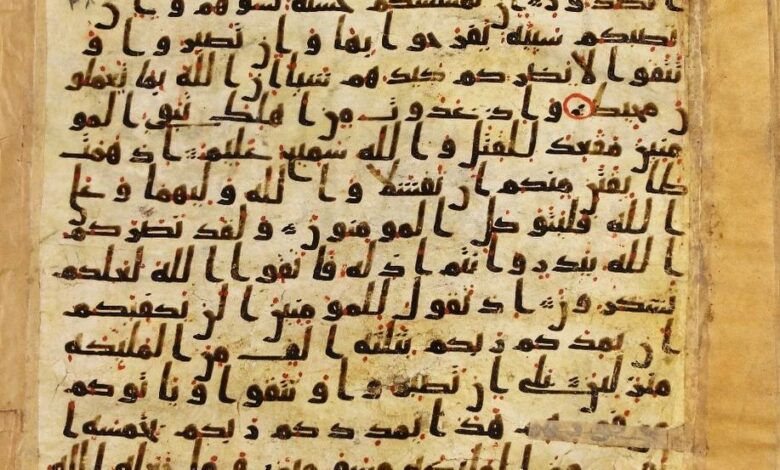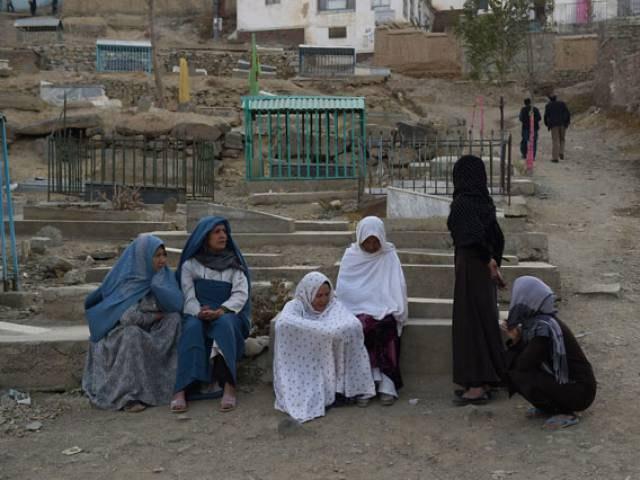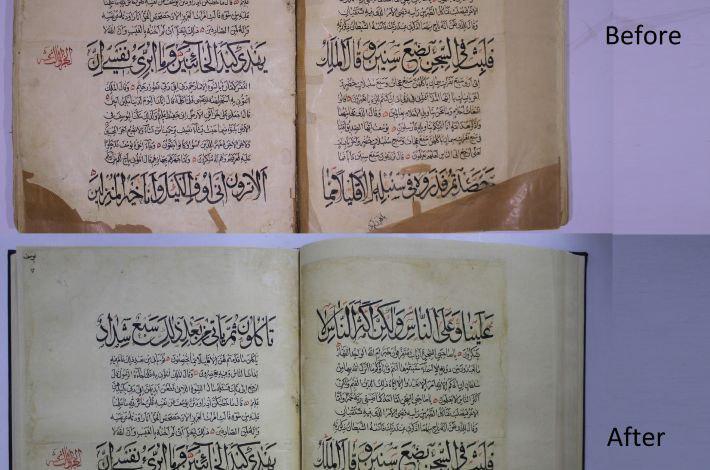Most complete Quranic manuscript from first century unveiled in Mashhad

During a ceremony attended by scholars, cultural officials, and university professors on Thursday, “Mushaf-e Mashhad-e Razavi” was unveiled at the Quds Hall of the central library of the Holy Shrine of Imam Redha, peace be upon him.
“Mushaf-e Mashhad-e Razavi” is the title for the collection of two Quranic copies written in old Hijazi script and registered under numbers 18 and 4116 in Aastane Qudse Razavi library, which together form one version of Quran.
Dating back to the first century of Hijri, the 252-page work is considered to be the most complete set of sheets from a complete Quran in the world, which contains more than 95% of the text of the Quran.
In light of the textual features of this Mushaf, the features of the style, spelling eccentricities, differences in ʾIʿrāb, arrangement of surahs, and finally results of the numerous tests of carbon-14, it is now clear that the main part of this version was written in the first century of Hijri.
According to Morteza Kariminiya, the researcher of the work, very few copies of the old Qurans in Hijazi script possess all the features of this particular Mushaf, which makes it one of the most important objective documents in our understanding of the developments in the history of the text of the Holy Quran in the first Hijri century.
“Mushaf-e Mashhad-e Razavi” was written on parchments in a large cut (about 50 x 35 cm) in Medina or Kufa in the first century of Hijri, and it probably resided in Kufa until a few decades later. This work was transferred to Khorasan in the following centuries and was kept by scholars and reciters of Neyshabur.
At the end of the 5th century AH, the owner of the Mushaf endowed this precious copy of Quran to the Holy Shrine of Imam Reza, peace be upon him, through a “waqf note” at the beginning of the copy.
According to the note, the Mushaf was compiled and bound in two separate volumes at the time of waqf in the late 5th century AH. Now, after 9 centuries, the first part of Mushaf registered as number 18 and the second part as 4116 are kept in Aastane Qudse Razavi library.
Hijazi Musahafs are the oldest Quranic manuscripts left from the first and early second centuries of Hijri, whose handwritings are slanted and inclined to the right. The number of known Mushafs around the world is less than 50 copies, from some of which only two or more sheets have survived, such as the Birmingham Quran. Mushaf-e Mashhad-e Razavi, with 252 pages containing more than 95% of the Quran, is considered to be the largest and most complete Quranic handwritten document from the first century of Hijri.





